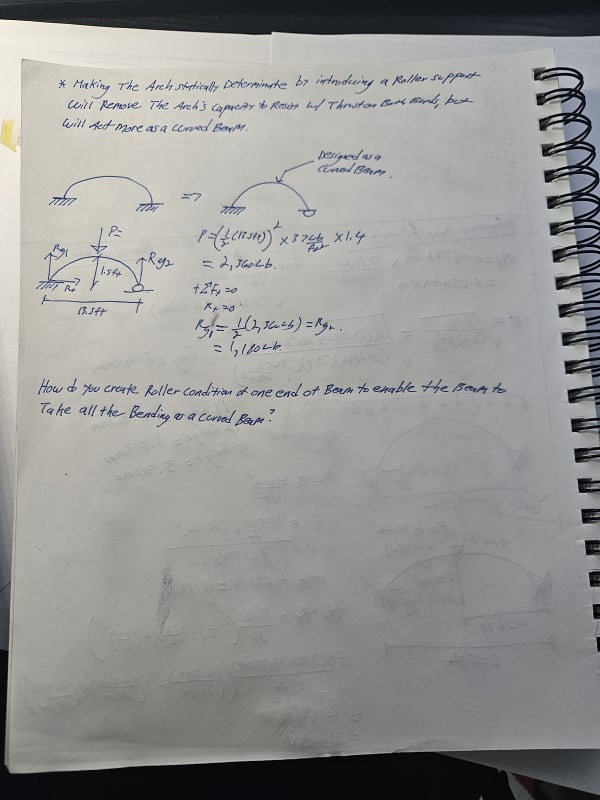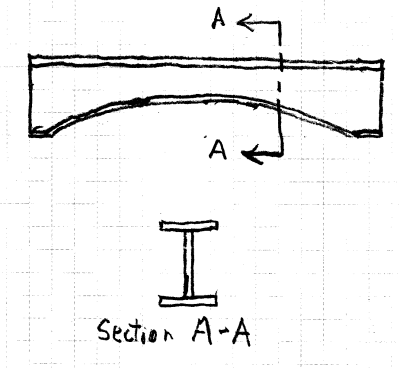
Hi everyone,
I was asked by the architect to design a 13.5 ft steel angle lintel to carry brick loading with an arch height of 1.5 ft above horizontal (see picture above). I took 37psf brick loading and calculated the centroidal point load of the distributed brick loading and placed it at the center of the span.
When analyzing this condition with both ends fixed (enabling to act as a true arch with thrust on each end binding the arch), the horizontal forces appeared too large to transfer down. The arch sits at 12 feet high with brick veneer columns on each end of arch) situated at the entrance of a home. I tried designing a concrete column within the brick veneer encasement, but the moment due to lateral thrust is quite large. I was able to design a cantilevered concrete column with enough rebars on the tension face to resist the thrust, but the column sits on slab on grade. The slab will not be able to take that moment, and a large subgrade footing would be required in my opinion (keep in mind I am an E.I.T w/ 2 years experience and our office is lacking a senior structural engineer).
Reconsidering my options, and reading up on some books, I realize if we can create a roller condition (as shown in the image above), then we can design the angle to take all the bending (removing the arch resisting mechanism). This I believe is a much more economical solution as we can design a curved angle to take the loading. [highlight #EF2929]The question is, how do you create a roller condition on one end of the angle which will rest inside veneer bricking?[/highlight] Do you just have it embedded the minimum distance and have it grouted? And when it comes to the ultimate loading, the grout would crack and "roll" out laterally?
Any input would be much appreciated.
Thank you.

